Cirrhosis of the Liver: Causes, Symptoms & Complications

Cirrhosis of the liver is a serious condition where healthy liver tissue is gradually replaced by scar tissue, impairing the liver’s ability to function properly. This scarring is often the result of long-term damage from various causes, including chronic alcohol consumption, viral hepatitis (B and C), non-alcoholic fatty liver disease, and certain genetic disorders.
What Happens in Cirrhosis?
The liver plays a crucial role in filtering toxins from the blood, aiding digestion, and storing nutrients. In cirrhosis, the formation of scar tissue disrupts these functions, leading to a range of health issues. As the disease progresses, the liver’s ability to perform its vital tasks diminishes, potentially leading to liver failure.
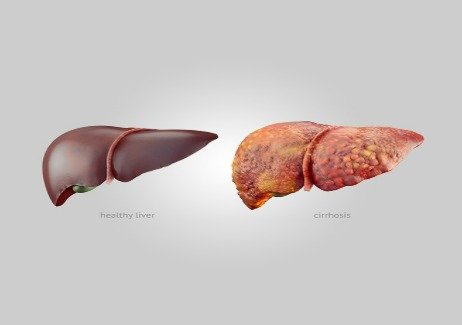
Common Symptoms
Cirrhosis often develops silently, with symptoms becoming apparent only as liver function declines. Common signs include:
- Fatigue and Weakness: A general feeling of tiredness.
- Loss of Appetite: Leading to weight loss.
- Nausea: Feeling sick to the stomach.
- Abdominal Pain and Swelling: Due to fluid accumulation (ascites).
- Jaundice: Yellowing of the skin and eyes.
- Itchy Skin: Caused by bile products deposited in the skin.
Easy Bruising and Bleeding: Due to decreased production of clotting factors.
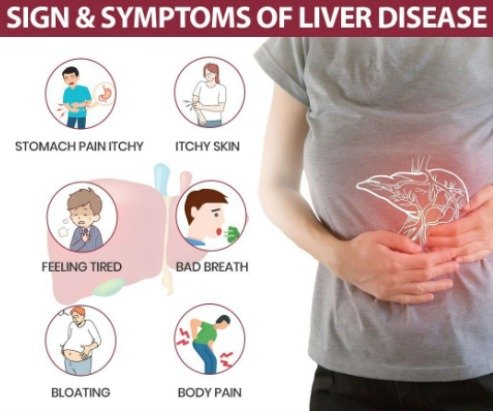
Stages (Grading) of Cirrhosis
Cirrhosis is often graded based on Child-Pugh Classification, which helps assess the severity of the disease and the patient’s prognosis.
| Grade | Class | Description | Life Expectancy | 1-Year Mortality |
| A | Mild | Liver working fairly well | 15–20 years | 5–10% |
| B | Moderate | Liver function is declining | 5–10 years | 15–25% |
| C | Severe | Advanced liver failure | 1–3 years | 45–60% |
The grading is based on 5 key things:
- Bilirubin level (a waste product in the blood)
- Albumin level (a protein made by the liver)
- INR (a measure of blood clotting)
- Ascites (fluid in abdomen)
- Hepatic encephalopathy (brain symptoms due to liver dysfunction)
Mortality by Complications
As cirrhosis progresses, serious complications arise. Here’s how dangerous each one can be:
1. Ascites (fluid in the abdomen)
- Most common complication.
- Can lead to infections like spontaneous bacterial peritonitis (SBP).
- 1-year mortality after development of ascites: 40%
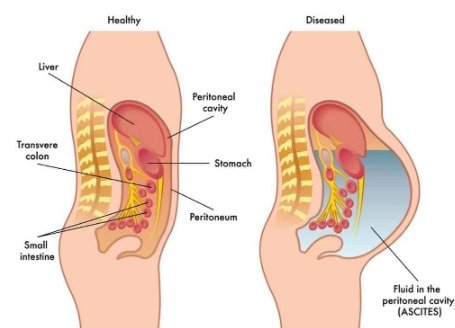
2. Variceal Bleeding (bleeding from swollen veins in esophagus/stomach)
- Medical emergency.
- 1st episode mortality: 15–30%
- Risk of rebleeding: up to 60% without treatment.
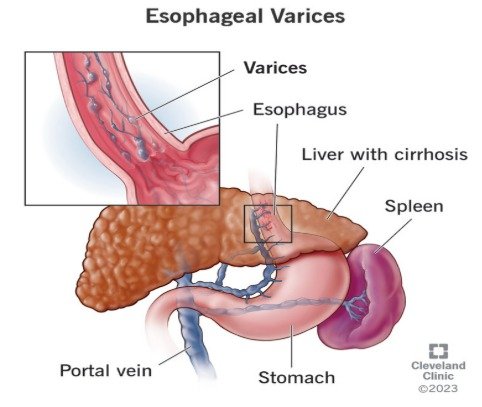
3. Hepatic Encephalopathy
- Confusion, memory loss, and in late stages, coma.
- 1-year mortality: up to 50% if not managed.

4. Hepatorenal Syndrome (Kidney failure due to cirrhosis)
- Very serious.
- Short-term mortality: 50–90% without liver transplant.

5. Liver Cancer (Hepatocellular Carcinoma)
- Common in patients with cirrhosis.
- Survival depends on size, spread, and liver function.
- Median survival without treatment: 6–20 months
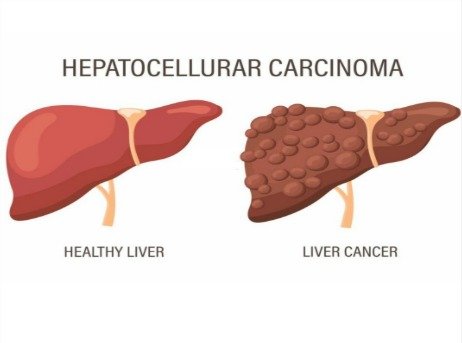
When Is Liver Transplant Needed?
Liver transplantation becomes necessary when:
- Cirrhosis is in Class C (Child-Pugh Grade C)
- Patients have complications like repeated encephalopathy, bleeding or kidney failure.
- Model for End-Stage Liver Disease (MELD) score is high, MELD score predicts 3-month mortality
| MELD Score | 3-Month Mortality |
| <10 | <2% |
| 20–29 | 19.6% |
| 30–39 | 52.6% |
| ≥40 | 71.3% |
Managing and Preventing Cirrhosis
While the damage from cirrhosis is irreversible, its progression can be slowed, and complications managed:
- Lifestyle Changes: Avoid alcohol, maintain a healthy weight, and eat a balanced diet.

- Medications: To control symptoms and treat underlying causes.

- Regular Monitoring: Frequent check-ups to monitor liver function and screen for complications.

- Liver Transplant: In advanced cases, a liver transplant may be necessary.
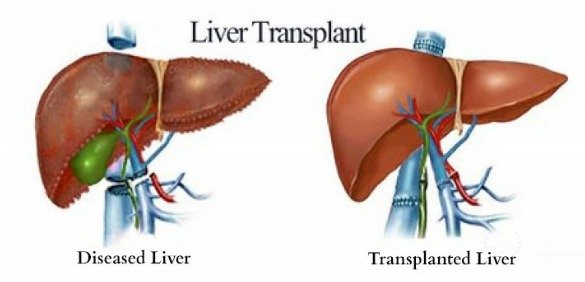
Conclusion
Cirrhosis of the liver is a progressive condition that can lead to severe health complications if not addressed promptly. Understanding its stages, associated risks, and potential outcomes is crucial for early intervention and effective management. By staying informed and proactive, individuals can make lifestyle adjustments, seek timely medical advice, and explore treatment options to mitigate the progression of the disease.
If you or a loved one is experiencing symptoms related to liver health, it’s imperative to consult with a healthcare professional. Early diagnosis and appropriate care can significantly improve quality of life and outcomes.
For more information on liver health and related topics, feel free to explore our other articles or reach out with your questions. Your health is our priority.
Click here for Download PDF File : Cirrhosis of the Liver: Causes, Symptoms & Complications
